What is Windowssecurityalarm.com?
If you notice that a fake alert from Windowssecurityalarm.com is popping up within your browser, you should know that your computer is infected with an adware or a potentially unwanted program.
Windowssecurityalarm.com contains fake message alert stating that your computer is infected with some sort of virus. To be able to fix it, you have to call the given number, which stand as their paid support service.
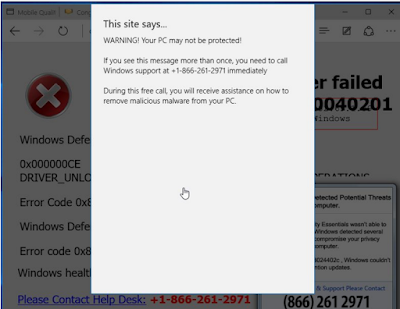
Please do not attempt to call their technical support hotline. First of all, the alert is not reliable. And you have to pay certain amount for the offered support. What’s more, calling the service for the offered help is not the key to solving your problem.
Usually, WindowsSecurityAlarm.com is bundled with other free software and is being installed by default, when the user accepts the EULA, while performing an express/ recommended installation. That’s why, you should be very careful what you agree to install and always opt-out for a custom installation and skip or deselect the software you don’t want to install or you are not familiar with.
With the analysis of the installation way of the WindowsSecurityAlarm.com, we can find ways to remove WindowsSecurityAlarm.com, instead of calling the given number and paying for the fake support and services. >>>Click the button to get a better approach.
How to Remove Windowssecurityalarm.com pop-up?
Approach 1: Remove Windowssecurityalarm.com with manual steps
Approach 2: Remove Windowssecurityalarm.com with automatic steps
Approach 1: Remove Windowssecurityalarm.com with manual steps
Disable the current windows, applications and system background processes, then disconnect from the Internet and remove the connected programs to make sure Windowssecurityalarm.com removal is not be affected by external interference.
Step 1: Stop background processes from Task Manager.
1) Press Ctrl+Alt+Del/Ctrl+Shift+Esc keys at the same time to quickly open Task Manager.

2) In the pop-up System Task Manager, click on Processes tab then select the unwanted processes related to Windowssecurityalarm.com running in the background, click on End Process button to disable them instantly.
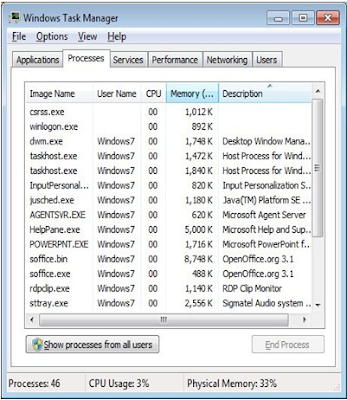
Step 2: Uninstall Windowssecurityalarm.com from Control Panel
1) Windows 7 users
Click Start menu at the bottom left corner of your desktop > select Control Panel> click Uninstall a Program > locate carefully the program in the displayed programs list and uninstall it.
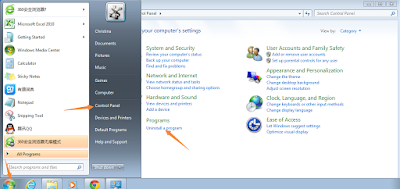
2) Window XP Users
Click Start on the bottom left corner your desktop > select Settings>click Add or Remove Programs> locate carefully the program in the displayed programs list and uninstall it.
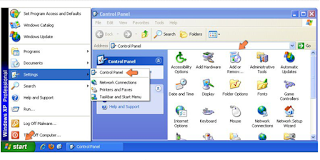
3) Windows 10 and Windows 8 Users
Right-click in the lower left corner of the screen > select Control Panel in the Quick Access Menu > choose Programs and Features in the displayed window > locate carefully the program in the displayed programs list and uninstall it.
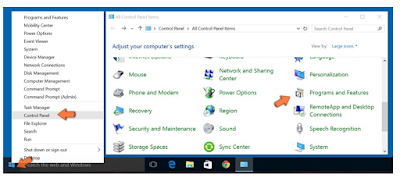
Step 3: Reset browsers (Internet Explorer, Mozilla Firefox, Google Chrome) to clean Windowssecurityalarm.com traces
1) Start the Browser, reset the browser settings and back to the original states.
For Internet Explorer
a) Open the Internet Explorer, click on the gear icon in the upper right corner of your browser, and then choose Internet Options.
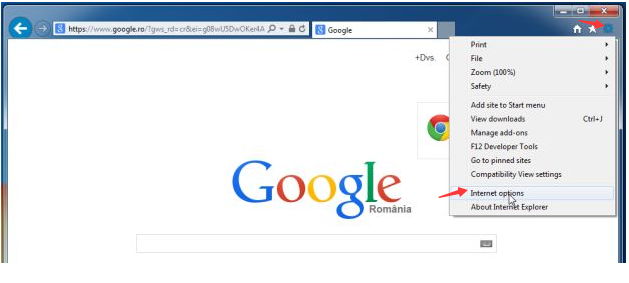
b) Click on the Advance tab in the Internet Option displayed box, and then click on the Reset button.
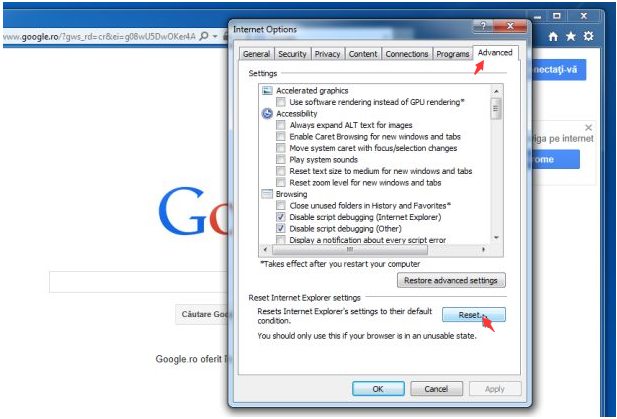
c) Tick the Delete personal settings in the Reset Internet Explorer settings section, and then click on Reset button.
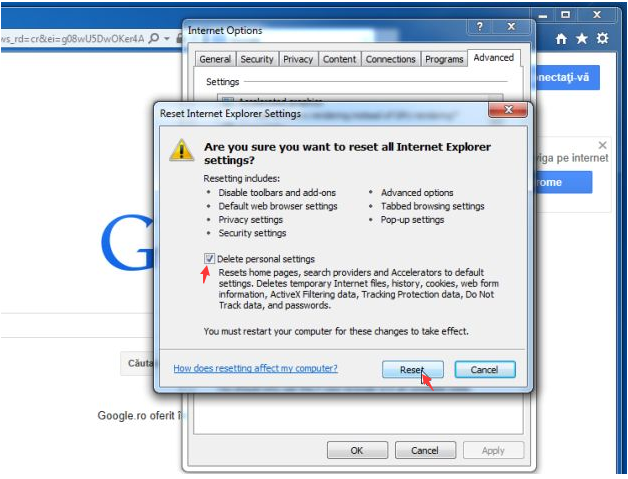
d) After completing, click on the Close button in the confirmation dialogue box. Close your Internet Explorer and restart your Internet Explorer to take effect.
For Mozilla Firefox
a) Open Mozilla Firefox, click on the icon on the upper right corner of your browser and then click on Help
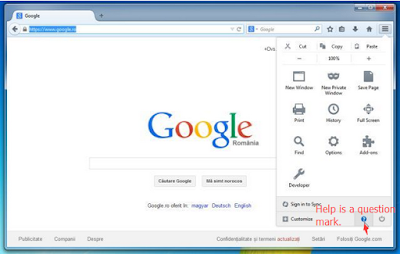
b) In the displayed box, click on Troubleshooting information
c) Click on Reset Firefox button and confirm the resetting.
a) Open Google Chrome menu and then click on Settings
b) Click on Show Advance Settings link, click on Reset Setting button and then complete the reset.
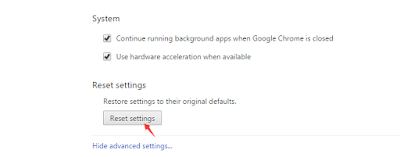
2) Click on the Homepage box and reset a safe URL as the default homepage.
For Internet Explorer
Click on Tools > Open Internet Option > locate General Tab > Input a safe and correct address on the Homepage box > click on Ok button to save the setting.

For Mozilla Firefox
Click on Tools > select Options > click General tab > reset the homepage in the box with a new URL > save the changes.
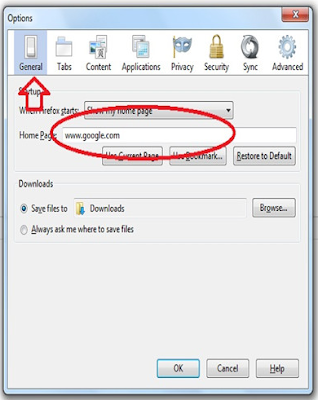
For Google Chrome
Click on Google Chrome wrench icon > select Settings > locate Appearance section > select Show Home Button > click on Change link > reset the homepage by inputting a correct address > click on Ok button.

Restart the browsers to let the resetting take effect.
Step4: Reset the browser to Intercept or block Windowssecurityalarm.com pop-up
For Internet Explorer
Click on Tools > open Internet Options > click on Privacy tab > select Tune on pop-up blocker > click on Ok button.
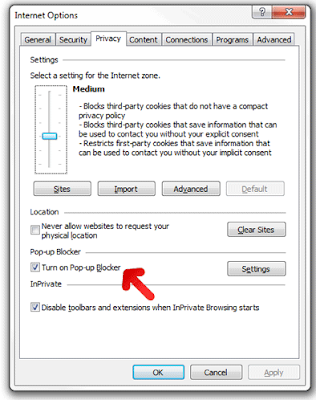
For Mozilla Firefox
Click on Tools-> click on Add-ons-> click on Get Add-ons-> Locate the top right corner-> type Adblock Plus in the search bar-> start the searching-> Find the Adblock Plus in the search results-> click on Install button-> wait till it finished.
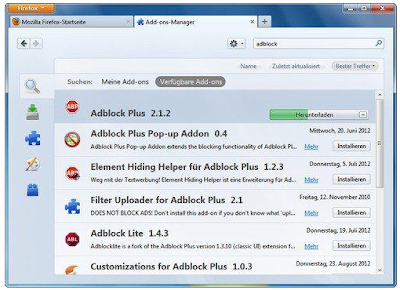
For Google Chrome
Note: Google Chrome’s adblock needs to be installed. If you would like to do so, you can follow the following steps.
Open the Google Chrome menu > click on Settings > click on Extensions > go to the Chrome Web Store(chrome.google.com/webstore) > search for the Adblock Plus for Google Chrome > install Adblock by following the wizard.

Restart the browser once finished the resetting.
5. Delete Windowssecurityalarm.com remaining registry entries
1) Open Registry Editor. Press Windows+R keys at the same time > type “regedit” in the displayed Run search bar > press Enter key to continue.

2) Back up the Registry file.
Click on File > select Export > type a new name for the backup > click on Save button.

3) Remove Windowssecurityalarm.com remaining registry files.
Locate HKEY_CURRENT_USER and HKEY_LOCAL_MACHINE branches in the Registry Editor, unfold them to find out all the related Windowssecurityalarm.com registry entries then delete them.
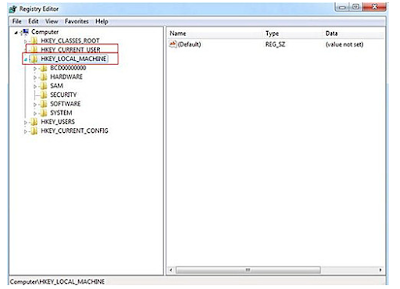
4) Remove Windowssecurityalarm.com leftovers completely.
Open Control Panel-> click on Appearance and Personalizations-> select Folder Options-> click on View tab-> Select “Show hidden files and folders”-> remove the check from “Hide protected operating system files(recommended)”-> click on OK button -> go to find out all the files of Windowssecurityalarm.com in the computer system and remove them without hesitation.
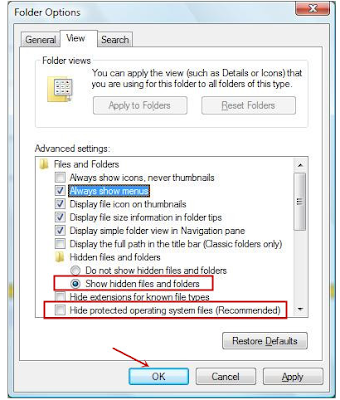
5) Restart the computer once finished the steps above.
If you still have trouble of completely removing Windowssecurityalarm.com, feel free to follow the below steps and click on the professional malware removal tool and get a better solution.
Approach 2: Remove Windowssecurityalarm.com with automatic steps
Step One: Download Spyhunter to scan
SpyHunter is an adaptive spyware detection and removal tool that provides rigorous protection against the latest spyware threats including malware, trojans, rootkits and malicious software.
1) Click on the bellow button to download Spyhunter to remove

2) Finish the installation
3) Start Spyhunter to have an overall scan and detection by clicking on the Malware Scan button
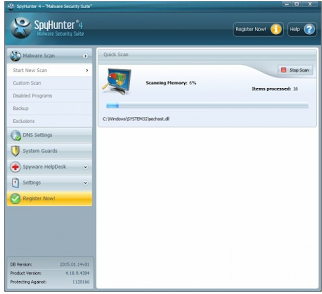
4) After the scanned and detected results come out, click on the Fix all button to repair your PC.
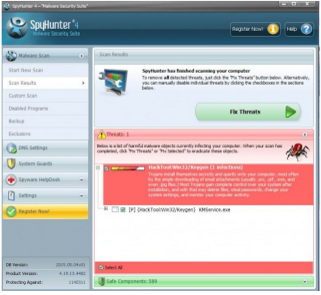
Step Two: Download RegCure Po to optimize PC
1) Click on the below button to download RegCure Pro

2) After installation, run RegCure Pro to give a system scan
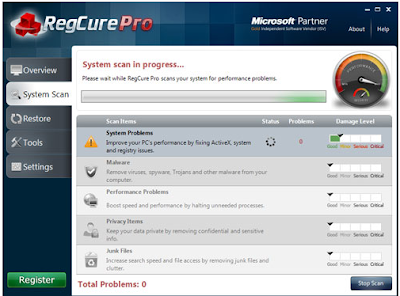
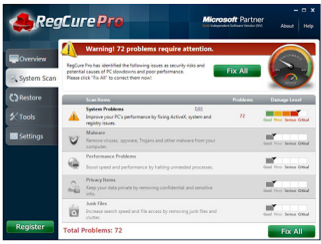
Conclusion:
Windowssecurityalarm.com pop-ups is not reliable.The purpose of it is to generate revenue from the paid services and support. If you know about computer, you can remove Windowssecurityalarm.com easily. And if you don't know much about it, you can get help from the profession malware removal tool Spyhunter. >>>Click here to download Spyhunter.
I've been using AVG anti virus for a couple of years, I'd recommend this solution to all you.
ReplyDelete